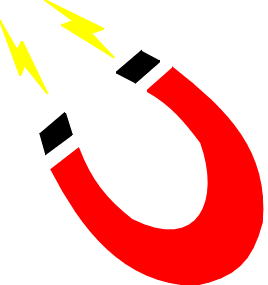Water Hose Splitter STL 3D Print: A DIY Solution for Garden Enthusiasts

Gardening can be a delightful and fulfilling hobby, allowing you to connect with nature while growing your plants and flowers. However, it moreover goes with its own plan of hardships. One common issue gardeners face is managing multiple hoses or watering systems simultaneously. This is where a water hose splitter STL 3D print comes into play. A hose splitter allows you to connect various hoses to a single water source, making it easier to maintain your garden without constantly switching hoses.
This article will explore the benefits of using a water hose splitter STL 3D print, creating your own using a 3D printer, and some tips for adequate watering. Additionally, we will discuss how 3D printing technology has made it easier and more accessible for DIY enthusiasts to create customized solutions for their gardening needs.
What is a Water Hose Splitter?
A water hose splitter STL 3D print is designed to divide a single water output into multiple outputs. This allows gardeners to attach two or more hoses simultaneously, watering different areas of the garden at the same time.
Why Use a Water Hose Splitter?
- Efficiency: With a hose splitter, you can save time and effort by watering multiple plants or areas of your garden simultaneously. This is especially useful for more extensive gardens or when several plants require attention.
- Cost-Effective: Instead of purchasing numerous hose connections or expensive watering systems, you can easily 3D print your water hose splitter STL 3D print. This can save you money while providing a customized solution to your needs.
- Customization: One of the best things about 3D printing is the ability to customize your design. With a water hose splitter STL 3D print, you can adjust the dimensions and specifications to fit your existing hoses perfectly.
- Durability: 3D-printed parts can be made with materials resistant to wear and tear. This ensures that your water hose splitter STL 3D print can withstand outdoor conditions without deteriorating quickly.
- Environmentally Friendly: By using 3D printing, you can create a product that minimizes waste. If you make a mistake in the design, you can easily modify it without producing excess material, promoting sustainable practices in gardening.
Designing Your Water Hose Splitter
Creating a water hose splitter STL 3D print requires a few essential steps. This is the way you can plan and print your own:
Step 1: Choose a Design Software
To create your water hose splitter STL 3D print, you’ll need to use 3D modeling software. Some popular options include:
- Tinkercad: An easy-to-use online tool perfect for beginners. It has a simple interface allows you to drag and drop shapes to create your design.
- Fusion 360: More advanced software that offers a wide range of features for detailed designs. It’s ideal for those looking to create more complex projects.
- Blender: A powerful tool for those with experience in 3D modeling. It offers extensive capabilities for creating intricate designs.
Step 2: Create Your Design
In your chosen software, start by sketching the basic shape of the splitter. Most splitters have a central inlet with multiple outlets branching off. Measure the diameter of your hoses to ensure a snug fit. You can also design additional features, such as valves or connectors.
- Basic Shape: Start with a cylindrical shape for the main body. Then, create branches that will serve as outlets for your hoses.
- Add Connectors: Ensure your design includes appropriate connectors that fit standard hose sizes. This is the way you can plan and print your own.
- Incorporate Valves: If you want to control water flow to each hose, consider designing easily operated valves.
Step 3: Export as STL
When your plan is finished, trade it as a STL document. This format is compatible with most 3D printers and is necessary for printing.
Step 4: 3D Printing
Load the STL file into your 3D printer’s slicing software, adjust the settings based on the material you’re using, and start printing. PLA or PETG are popular materials for hose splitters, as they are durable and weather-resistant.
- Print Settings: Select the proper infill and layer height for your print. A higher infill percentage will make the splitter more robust.
- Testing the Fit: Once printed, test the fit of your water hose splitter STL 3D print with your hoses before installation to ensure everything aligns perfectly.
FOR MORE BLOGS PLEASE VISIT LOGICAL BLOGS
Tips for Using Your Water Hose Splitter
Once you have your water hose splitter STL 3D print, here are some tips to ensure practical usage:
- Seal Connections: Check for leaks after attaching your splitter to the water source. You may need Teflon tape or silicone sealant to prevent water from escaping at the joints.
- Use Valves: Consider incorporating valves on each outlet if your design allows for it. This will enable you to control the water flow to each hose individually.
- Regular Maintenance: Check your water hose splitter STL 3D print over time for any signs of wear or damage. Regular maintenance will extend the life of your splitter and ensure it continues to function correctly.
- Adapt for Seasonal Changes: Depending on your garden’s needs, you may want to adjust the setup of your hose splitter during different seasons. For example, in the summer, you may need to water more frequently than in the fall.
- Winter Storage: If you live in an area with harsh winters, consider removing your water hose splitter STL 3D print and storing it indoors to prevent freezing and cracking.
Advantages of 3D Printing Your Own Splitter
There are several benefits to opting for a water hose splitter STL 3D print rather than purchasing a pre-made product:
- Personalization: With 3D printing, you can tailor the design to meet your gardening needs. Want an extra outlet? Need a particular size? You have complete control over the design.
- Sustainability: By printing your splitter, you can use eco-friendly materials, contributing to a more sustainable gardening practice.
- Innovation: The world of 3D printing encourages creativity and innovation. You can experiment with different designs and features to create a unique watering solution.
- Community Sharing: After creating your water hose splitter STL 3D print, consider sharing the design with other gardening enthusiasts. Many online platforms allow you to upload STL files for others, fostering a community of creators.
Conclusion
A water hose splitter STL 3D print is an excellent DIY project for any gardening enthusiast. By taking advantage of 3D printing’s benefits, you can create a functional and efficient tool that makes watering your garden more accessible and practical. Whether you’re looking to save time and money or enjoy making your gardening tools, a hose splitter is a valuable addition to your arsenal.
So, gather your design software, fire up your 3D printer, and start creating your water hose splitter STL 3D print today! By doing so, you will not only enhance your gardening experience but also engage in a rewarding project that combines creativity with practicality.
FOR MORE BLOGS PLEASE VISIT LOGICAL BLOGS





